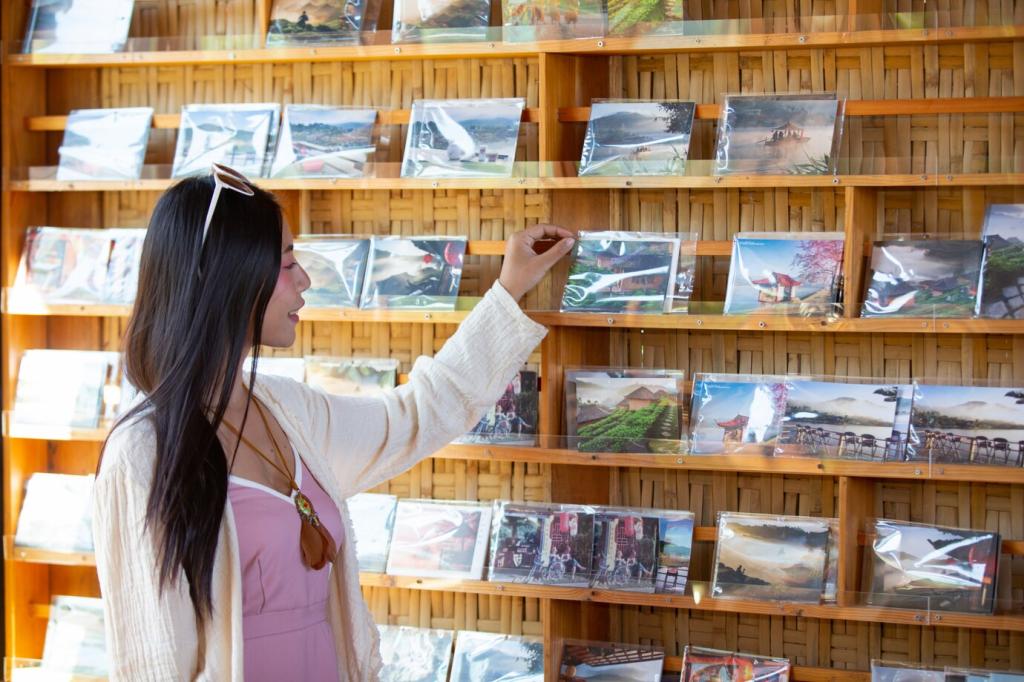
Exploring Hidden Vintage Bookstore Gems
The pursuit of vintage bookstores is a journey into the heart of literary history, offering richly atmospheric spaces filled with hidden treasures. Far removed from the standardized shelves of chain retailers, these unique establishments invite passionate readers and wanderers alike to lose themselves in worlds old and new. This page takes you behind the scenes of some of the most enchanting, lesser-known vintage bookstores, revealing the magic that lies within their walls and the stories they hold. Allow yourself to be inspired by these havens, where every dusty corner promises discovery and every encounter with a rare volume is a memory waiting to be made.
Previous
Next
Meeting the Keepers of Knowledge

Proprietor Personalities
The proprietors of vintage bookstores are often as fascinating as the books they sell. Some are retired academics, others lifelong bibliophiles turned curators, each with their own penchant for specific genres or historical periods. Their enthusiasm is contagious, and their deep knowledge turns idle browsing into an educational experience. Engaging with these owners can reveal insights not only about specific titles but also about the history and evolution of literature itself, making every visit feel intimate and intellectually enriching.

Stories Behind the Shops
Each vintage bookstore holds its own origin story, rich with dreams, happenstance, and sometimes, a dash of serendipity. Some were founded decades ago by those seeking a quiet space away from a hectic world, while others sprung up in recent years with the goal of preserving fading literary cultures. These stories, shared freely with visitors, add layers of meaning to the shelves—pasts entwined with each book’s journey and each reader’s experience. They foster a sense of stewardship, reminding patrons that supporting these shops is also supporting a living history.

Bookish Belonging
Beyond the tangible volumes, vintage bookstores foster belonging. Regulars might gather to discuss philosophy, trade recommendations, or share memories of books from their childhoods. The relationships between staff and customers frequently transform into genuine friendships, connecting strangers through their mutual love of the written word. This sense of shared identity and appreciation creates a welcoming environment where anyone—from the seasoned collector to the curious newcomer—feels at home.
Local Landmarks and Faded Signage
Many of the most remarkable vintage bookstores sit well off the beaten tourist path, requiring visitors to venture beyond main streets and into less-trafficked neighborhoods. The journey to reach them often involves winding turns, staircases hidden in courtyards, or subtle basement entrances. These adventuresome approaches imbue the act of searching with excitement and anticipation, making discovery all the sweeter. The challenge of finding such stores often ensures that visitors are genuinely passionate, resulting in a more intimate and authentic atmosphere once inside.
A hallmark of true vintage bookstores is their understated exterior. Sun-bleached signs, bygone shop names, and windows cluttered with handwritten flyers evoke a charming sense of age and resilience. These weathered facades act as invitations to those looking for something more than glossy modernity, nodding to decades or even centuries of literary trade. Stepping through these doors, patrons enter spaces where time slows and history reigns, transporting them from the bustle of modern life to a sanctuary brimming with stories.
The relationship between hidden vintage bookstores and their neighborhoods is symbiotic. Often, the store becomes an unofficial community hub—a place for local artists, poets, and musicians to display their work or host events. These collaborations reinforce the bookstore’s role as a cultural stronghold, intimately tied to the identity of its surroundings. The mutual support between store and neighborhood ensures that both continue to thrive despite the pressures of time and change, preserving pockets of history for future generations.
Treasures on the Shelves
Rare Finds
Among the well-worn paperbacks and dog-eared favorites lie exceedingly rare volumes—first editions, misprints, and books long out of print. These treasures provide more than just literary value; they offer glimpses into the craft of bookmaking and the shifting tastes of generations past. Discovering such a book can feel transformative, a personal brush with history. For many, these finds spark new interests or deepen existing passions, breathing life back into forgotten texts.
Ephemeral Ephemera
Amidst the collections of classic novels and academic treatises, vintage bookstores also harbor ephemera—pamphlets, old postcards, handwritten notes slipped between pages, and vintage magazines. Each item carries its own backstory, evoking the fleeting nature of memory and the lives once entwined with these objects. Finding a letter tucked away in a book or a cinema ticket from decades ago can connect readers to unknown individuals, adding a personal and sometimes poignant dimension to their visit. Such serendipitous discoveries make each trip distinct.
Niche Sections
One delight of vintage bookstores is stumbling upon sections dedicated to the odd, the specific, or the outright obscure: metaphysical treatises from the nineteenth century, niche cookbooks, esoteric philosophy texts, or local history compilations. Often curated by the store’s passionate staff, these sections showcase the immense range of human thought and creativity. They invite exploration outside one’s usual reading comfort zone, opening doors to new interests and ensuring that unique or underappreciated voices are not lost to time.
It is not uncommon for vintage bookstores to host intimate readings with local or visiting authors. These gatherings transform the act of reading into a collective experience, allowing participants to hear stories in the very space where countless others have been discovered. The opportunity to engage directly with authors, ask questions, and discuss works in depth adds a new dimension to the books on the shelves and entices attendees to delve deeper into genres or writers they might otherwise overlook.
Events That Bring Books to Life
Serendipity and Personal Discovery
Browsing a vintage bookstore is as much about people as it is about books. It is common to strike up spontaneous conversations with strangers over a shared appreciation for a particular author or genre. These chance encounters can lead to recommendations, friendships, and new intellectual pursuits. The open, welcoming environment of such stores encourages curiosity and exchange, building bonds that might never have formed elsewhere. For many, these interactions become cherished memories, adding a uniquely social dimension to solitary adventures.


The Ritual of Browsing
In an era of online shopping and algorithmic recommendations, the physical act of browsing through bookshelves offers a deliberate, mindful alternative. The tactile pleasure of running a hand over spines, pulling down an intriguing title, and inspecting its cover and pages cannot be replicated digitally. This ritual encourages patience, curiosity, and a willingness to embrace the unknown. For many, the process itself is relaxing and meditative, a pause from the digital currents of daily life.
Sustainability and Reuse
Vintage bookstores inherently champion sustainability by giving pre-loved books extended life cycles. Each purchase is a small act of environmental stewardship, diverting items from landfills and supporting a culture of reuse. Staff often take great care in repairing or conserving fragile volumes, further preserving knowledge and craftsmanship for future generations. This ethos appeals to both environmentally conscious readers and those passionate about maintaining a direct connection to literary history.
Supporting Independent Culture
The continued existence of vintage bookstores relies upon a dedicated community of book lovers and supporters. By choosing to shop at these stores, patrons contribute to the survival of independent businesses that value authenticity, personal service, and local culture above profit margins. This support ensures that future generations will have access to these unique gathering places—spaces that nurture creativity, critical thought, and meaningful human connection.
